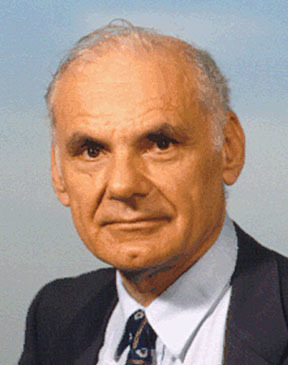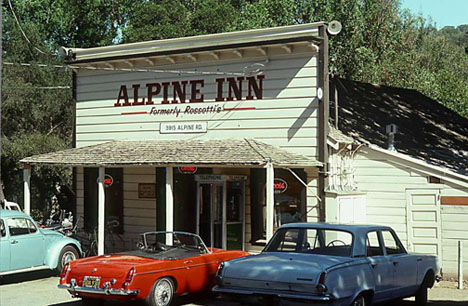By Jim Harrison
The 45-year-old internet affects, if not dominates, the lives of nearly everyone. From your desk, you could send a message to 43% of the people on the planet — in a few seconds. Pretty amazing. Most of the remaining 57% will be added in a few years. Roughly 300 million people gained internet access in the past year. There were said to be 3.26 billion internet users as of December 2015. The internet has had a profound effect on retail and government and represents one of the most successful examples of the benefits of sustained investment and commitment to research and development.
The “invention” of the internet was anything but a one-man show. Many people were involved over a long period of time. A number of published articles have pointed to breakthroughs in its development, but it is really more of a continuum.
J.C.R. Licklider of MIT recorded descriptions of the social interactions that could be enabled through networking in a series of memos in August 1962. He envisioned a globally interconnected set of computers through which everyone could quickly access data and programs from any site. He called this the Intergalactic Network. Licklider was the first head of the computer research program at DARPA, starting in October 1962.

Photo: Webapplify
Dr. Leonard Kleinrock pioneered the mathematical theory of packet networks. In 1962, he completed his doctoral dissertation at MIT on queuing theory in communication networks and became an assistant professor at UCLA. In 1964, work on secure packet switching networks was taking place at MIT, the RAND Corporation, and the National Physical Laboratory in Great Britain. Paul Baran published On Data Communications Networks . Kleinrock’s thesis was also published as a seminal text on queuing theory.
Also in 1964 (just as a reference), IBM’s System 360 mainframe computers came onto the market, and within two years, orders reached 1,000 per month. In 1965, Digital Equipment (DEC) brought out the PDP-8 minicomputer, which had a base price of only $18,500 (equivalent to $138,900 today).
It is worth noting that ARPANET was originally intended as a time-sharing service that connected many computers so that scientists could make use of spare compute time. Larry Roberts, who was employed by Bob Taylor at the Pentagon's Advanced Research Projects Agency to build ARPANET, said that it was never intended to link people or be a communications and information facility. The work done in 1967–1969 on ARPANET was for time-sharing.

Fig. 1: Larry Roberts from the Pentagon's Advanced Research Projects Agency. Photo Credit: Computer History Museum.
In 1967, Roberts convened a conference in Ann Arbor, MI, to bring the ARPA researchers together. At the conclusion, Wesley Clark suggested that the network be managed by interconnected “Interface Message Processors” in front of the major computers. Called IMPs, they evolved into today’s routers.
In 1968, Roberts and the ARPA team refined the overall structure and specifications for ARPANET. They issued an RFQ for the development of the IMPs. That same year, the ILLIAC IV, the largest supercomputer of its time, was being built at Burroughs under a NASA contract. More than 1,000 transistors were squeezed onto its RAM chip, manufactured by Fairchild Semiconductor, yielding 10 times the speed at one-hundredth the size of equivalent core memory. ILLIAC-IV would be hooked to ARPANET so that remote scientists could have access to its unique capabilities.
In 1969, Frank Heart put a team together to write the software that would run the IMPs and to specify changes in the Honeywell DDP-516 they chose. Four sites were selected. At each site, a team worked on producing the software to enable its computers and the IMP to communicate. At UCLA — the first site — Vint Cerf, Steve Crocker, and Jon Postel worked with Kleinrock to get ready. The team called itself the Network Working Group (RFC 10) and came to see the job as the development of a “protocol,” the collection of programs that came to be known as NCP (Network Control Protocol).
The second site was the Stanford Research Institute (SRI), where Doug Engelbart saw the ARPA experiment as an opportunity to explore wide-area-distributed collaboration using his NLS system, a prototype “digital library.” SRI supported the Network Information Center, led by Elizabeth Feinler and Don Nielson. At the University of California, Santa Barbara (UCSB), Glen Culler and Burton Fried investigated methods for the display of mathematical functions using storage displays to deal with the problem of screen refresh over the net. Their investigation of computer graphics supplied essential capabilities for the representation of scientific information.
Cambridge-based BBN built the special IMPs that connected the main computers to the net and served as the system's administrator; SRI was the Network Information Center, which, besides acting as a central library, kept track of all the computers on the net and ran the Domain Name System until 1991; and UCLA was the Network Measurement Center, researching and improving how data moved across the network.
After the first IMP was installed at UCLA in September, handwritten logs show that the first host-to-host connection, from UCLA to SRI, was made on October 29, 1969. The first “login” crashed the SRI host, but the next attempt worked. Some call this the beginning of the web, and while it did use packet switching, it was not about people communicating over a network, but more about sharing compute time and it was also not about a network of networks.
By early 1970, the three centers were all connected, along with UCSB and the University of Utah. By 1972, the network had 37 nodes.
Email was adapted for ARPANET by Ray Tomlinson of BBN in 1972. He picked the “@” symbol from the available symbols on his teletype to link the username and address.

Fig. 2: Robert Kahn of ARPA played a key role in early ARPANET development. Photo Credit: Wikipedia.
Larry Roberts and Bob Kahn at ARPA decided that it was time for a public demonstration of ARPANET. In October 1972, ARPANET publicly demonstrated their system for the first time at the International Computer Communications Conference in Washington, D.C. Following that meeting, an International Networking Group chaired by Vinton Cerf was established.
The most important part of what we now know as the internet is the TCP/IP protocol, which was conceived by Vinton Cerf and Robert Kahn in 1973. Cerf attended graduate school at UCLA, where he studied under Professor Gerald Estrin, worked in Professor Leonard Kleinrock's data packet networking group, and contributed to a host-to-host protocol for ARPANET. Cerf became an assistant professor at Stanford University from 1972–1976, where he conducted research on packet network interconnection protocols and co-designed the DoD TCP/IP protocol suite with Kahn. Donald Davies at the U.K. National Physical Laboratory independently devised a similar system. In 1965, Davies developed the concept of packet switching and coined that term.

Fig. 3: Vinton Cerf, who co-invented TCP/IP. Photo Credit: Wikipedia.
In early versions of this technology, there was only one core protocol: TCP. The first version of this predecessor of modern TCP was written in 1973, then revised and formally documented in RFC 675, Specification of Internet Transmission Control Program, December 1974. The TCP/IP model came into existence about 10 years before the Open Standards Institute (OSI) model with its seven layers.
On August 27, 1976, a team led by Don Nielson, the assistant director of telecommunications at Menlo Park engineering firm SRI International, drove a specially equipped van 6 ½ miles south and parked at the Alpine Inn Beer Garden (Rossotti’s), a biker bar in Portola Valley. They ran a cable from the van’s radio to a computer set up at a picnic table out back and used the radio to connect to another computer at the SRI office and on to Boston — a wireless network of networks.

Fig. 4: Researchers from SRI International sent a wireless internet transmission from the Alpine Inn Beer Garden in Portola Valley, also known as Rossotti's, in 1976. Photo Credit: Don Nielson.
Robert Metcalfe was working at Xerox PARC in 1973 when he and David Boggs invented the Ethernet protocol. Initially intended as a standard for connecting computers to printers and copy machines over short distances, it became the prime method of connecting to the internet — first using coax cable and later unshielded twisted pair (Cat 5 and Cat 6).
In the same year, Xerox PARC developed a program called Smalltalk, and Bell Labs developed a language called “C.”
In 1980, physicist Tim Berners-Lee, a contractor at CERN, proposed and prototyped ENQUIRE, a system for CERN researchers to use and share documents. In 1989, he wrote a memo proposing an internet-based hypertext system that specified HTML and wrote the browser and server software in late 1990. Hypertext markup language is yet another key element of the internet and the World Wide Web.

Fig. 5: Physicist Tim Berners-Lee.
In 1991, Sen. Al Gore of Tennessee sponsored a law that allowed for commercial use of the internet. UUNet, PSINet, and Sprint emerged as some of the earliest internet service providers. There was one commercial website in 1991. By 1996, there were 258,000 websites and 77,433,860 internet users. Now there are 863 million websites (actually down 11% in 2015) and 3.26 billion users.
Advertisement





